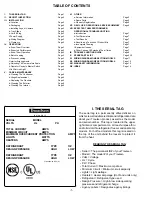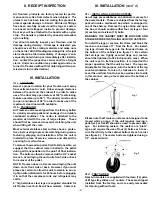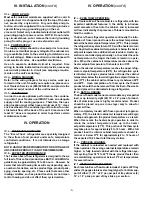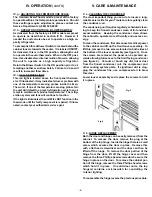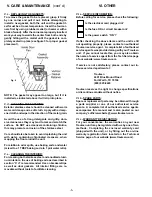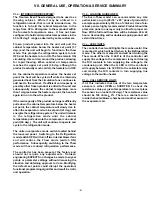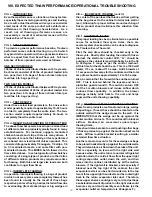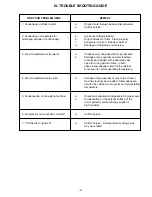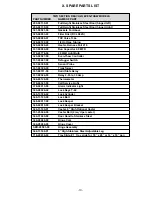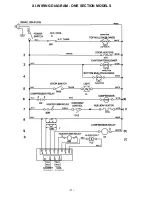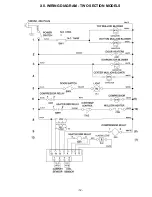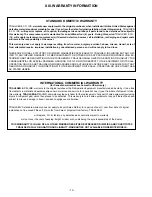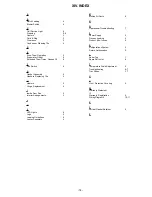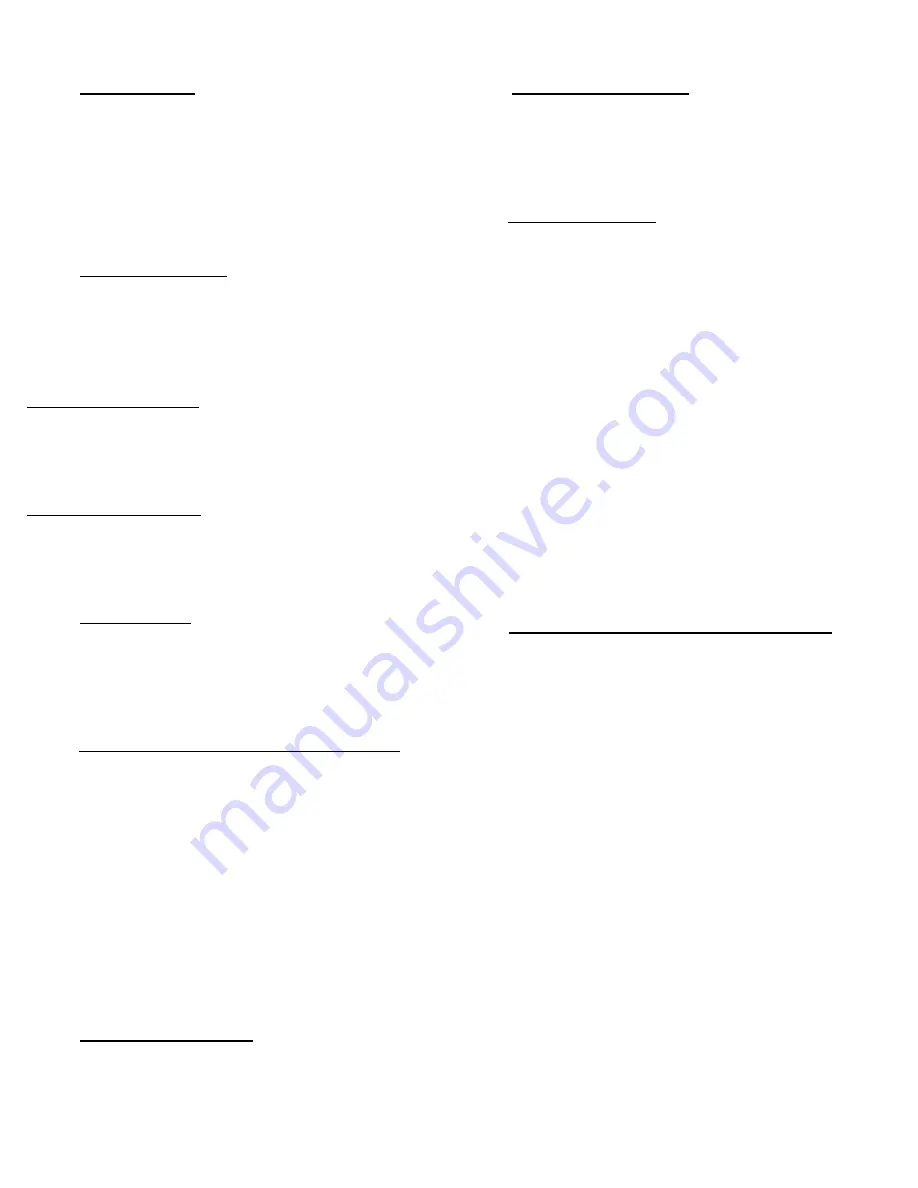
-7-
VIII. EXPECTED THAW PERFORMANCE/OPERATIONAL TROUBLESHOOTING
VIII. a - INTRODUCTION:
Even thaw performance is a function of many factors,
especially those involving product types and loading.
As a result, actual thaw times will vary as even similar
sized loads of the same product will exhibit some
differences in their thawing characteristics. As a
result, not all thawing performance issues are
necessarily a result of mechanical issues with the
Traulsen Even-Thaw unit.
VIII. b - TEST PARAMETERS:
To provide a general performance baseline, Traulsen
performed some controlled testing in our lab which
may provide the operator with an approximate idea on
what to expect from their Even-Thaw unit. Full load
batches of frozen product were used as follows:
ONE SECTION MODELS
336 lbs. of chicken, distributed between 14 tray levels.
Each level consisted of 24 lbs. of product loaded into
two pans (four 6 lb. bags of frozen chicken total per
level/two 6 lb. bags per tray).
TWO SECTION MODELS
672 lbs. of chicken, distributed between 28 tray levels.
Each level consisted of 24 lbs. of product loaded into
two pans (four 6 lb. bags of frozen chicken total per
level/two 6 lb. bags per tray).
VIII. c - TEST RESULTS
Under these actual load parameters, the one-section
model generally required approximately 19-22 hours
in order to completely thaw the entire load. The two-
section model required approximately 24-hours to
completely thaw the entire load.
VIII. d - RESULTS AS A FUNCTION OF PRODUCT MIX:
The above thaw times were based upon a mixed load
of different chicken products typically found in many
establishments. For instance: nuggets, marinated
chicken breasts and strips, there are many others. It
is important to note that initially, all tests performed
were based on a mixed load of chicken product. This
consisted of approximately 1/4 nuggets, 1/4 strips, 1/4
to 1/3 marinated breasts, and some filler with non-
marinated breasts. This MIXED batch thawed in the
times listed above. In actual operation, thaw batches
consisting of a single type of product, or other ratios
of different chicken products may require more time
for thawing. Both this and larger size loads can both
contribute to longer thaw times.
VIII. e - INCOMPLETE THAWING:
In operation, incomplete thawing (i.e. bags of product
in which not every piece was completely thawed) has
been found to usually be the result of those bags
respective pan level having had restricted airflow due
to overloading (from stacked bags or big wedges in
VIII. e - INCOMPLETE THAWING (cont
’
d):
the center of the pan level that blocks air from getting
to the bag closest to the cabinet interior side wall or
rear). Allowing for proper air-flow around each bag of
frozen product should eliminate this situation from
occurring.
VIII. f - EQUIPMENT ISSUES:
If improper loading has been eliminated as a possible
cause for extended thaw cycle times, there are
several system checks which can be done to diagnose
the Traulsen Even-Thaw unit.
First, the amp draw should be checked early in the
thaw cycle. Shortly after loading the unit with frozen
product, the electronic control LED,
“
G
”
, should be
pulsing as the cabinet temp will probably be in the 30
to 34 degree F range as per the control read-out.
At this time, full heat should be on. This is a 1300 watt
heater, 115 vac, is about 11.3 amps. Add 4 blowers at
1.1 amps and a few amps for the controls and the total
amp draw should be approximately 16 to 16.5 amps.
Also, be certain that the fan switch has not been turned
OFF. This is located behind the louvers and has a
protective guard around it. This switch can turn OFF
2 of the 3 mullion blowers and reduce airflow which
reduces thaw capability. In addition, the blower
wattage actually adds heat to the unit and helps
augment the units thawing capability.
VIII. g - OTHER CAUSES OF EXTENDED THAW TIMES:
Some frozen products are often stored in large, wedge
shaped bags. If used, these should be located on the
outside wall with the wedge closest to the wall. It is
IMPERATIVE that the wedge not be up against the
center mullion air ducts. This could result in blocked
airflow. Reduced air movement equals longer
thawing times.
Care should also be taken to avoid pushing other bags
of frozen product up against the mullion sheet metal
ducts. Airflow could be blocked resulting in a similar
extended thaw time situation.
Another scenaio to avoid is for these wedges or bags
to be placed inadvertently up against the outside walls.
They will also block air flow down the sides of the unit.
This is especially an issue with the right side wall
because when the unit returns to normal refrigerated
operation mode, the cold air flows from the upper right
ceiling evaporator outlet, down the wall, and then
mixes into the cabinet, distributed by all the mullion
blowers. If the right wall is blocked, and especially if
blocked near the top right of the cabinet, the cold
evaporator exit air can be short circuited on to the top
two or three upper right hand levels and be routed right
back to the return evaporator inlet duct. Therefore,
those upper shelves could get very cold and perhaps
a substantial amount of product on the right side could
become very cold and possibly even refreeze (as the
evaporator outlet air temperature is 20 degrees F).


